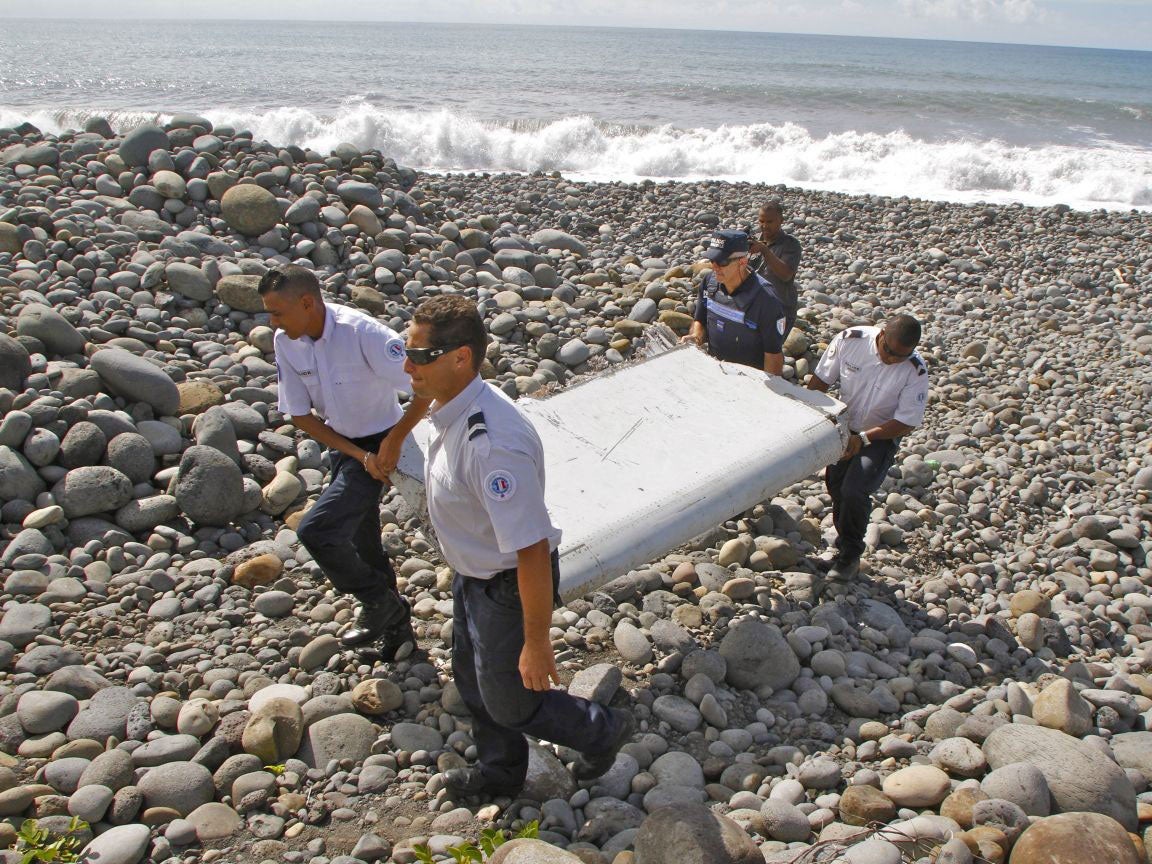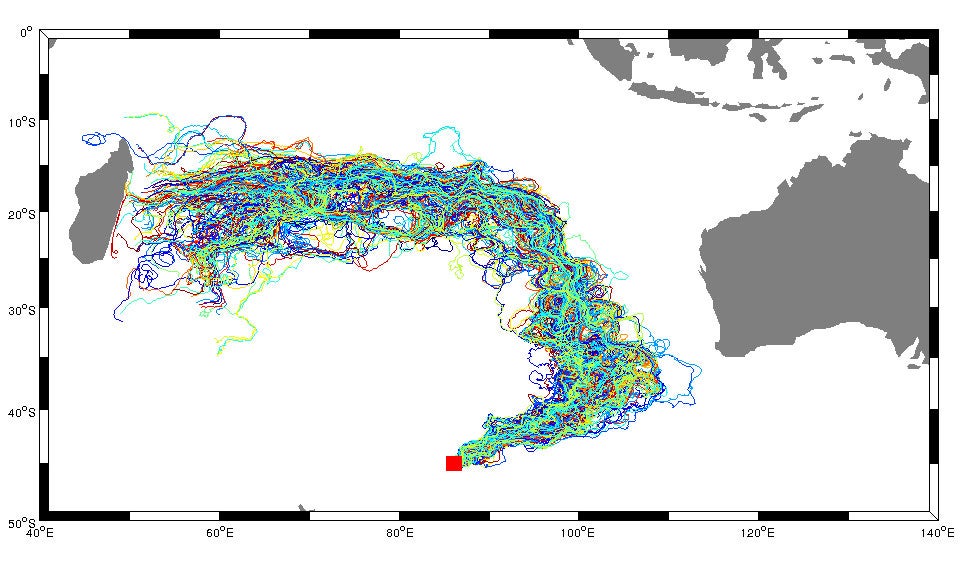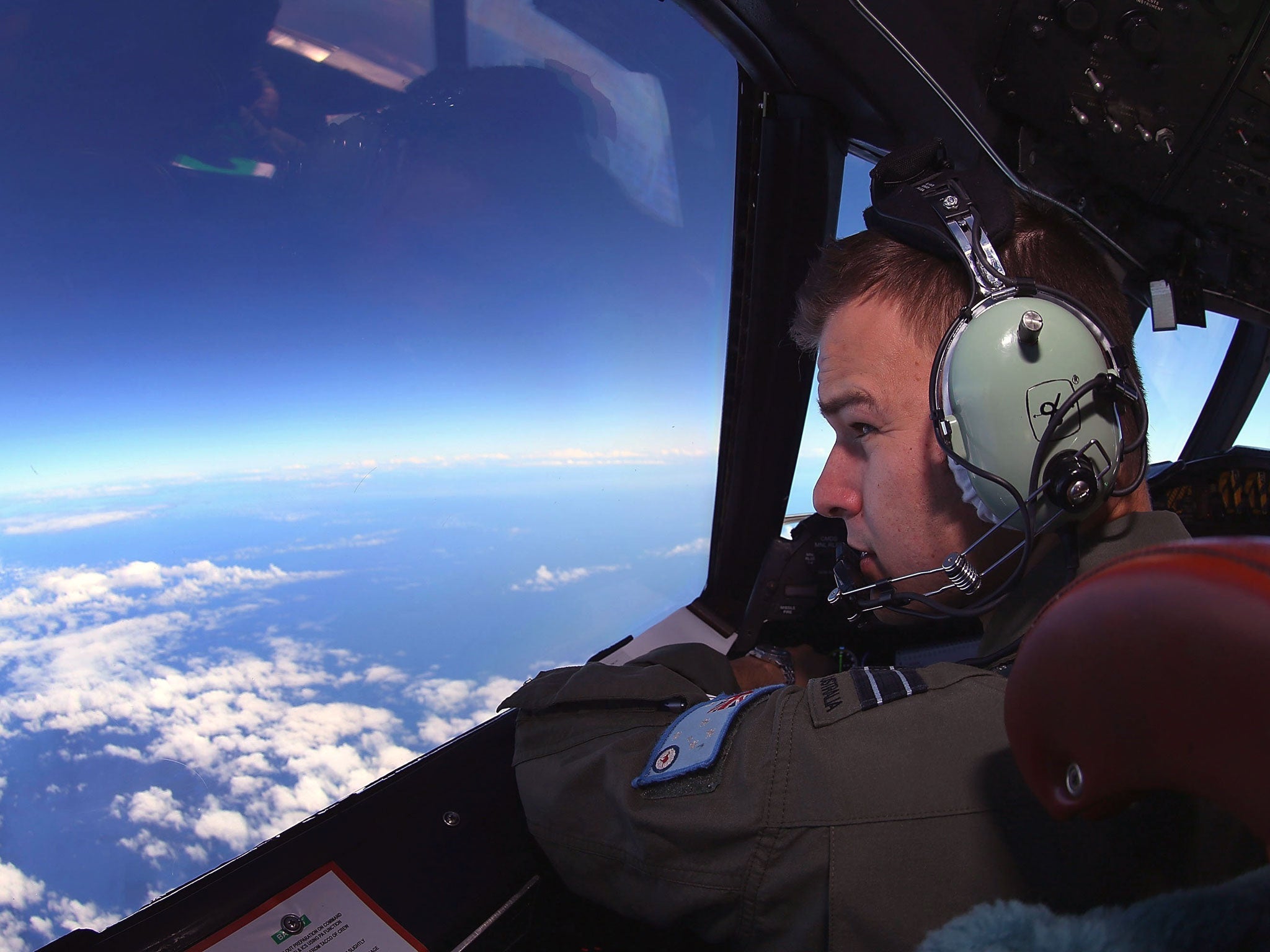MH370 'debris': The six big questions about the possible wreckage on Réunion
Investigators believe the part is almost certainly from a Boeing 777

Your support helps us to tell the story
From reproductive rights to climate change to Big Tech, The Independent is on the ground when the story is developing. Whether it's investigating the financials of Elon Musk's pro-Trump PAC or producing our latest documentary, 'The A Word', which shines a light on the American women fighting for reproductive rights, we know how important it is to parse out the facts from the messaging.
At such a critical moment in US history, we need reporters on the ground. Your donation allows us to keep sending journalists to speak to both sides of the story.
The Independent is trusted by Americans across the entire political spectrum. And unlike many other quality news outlets, we choose not to lock Americans out of our reporting and analysis with paywalls. We believe quality journalism should be available to everyone, paid for by those who can afford it.
Your support makes all the difference.After more than 16 months and a global effort involving more than 30 countries and 140 ships, the hunt for Malaysia Airlines Flight 370 has finally yielded a clue.
A piece of debris — strikingly similar to a moveable wing part found on Boeing 777s like the Malaysia Airlines plane — was found washed up on a small, obscure island in the Indian Ocean called Réunion.
But what that debris means has investigators, experts and amateur sleuths around the world scrambling once again. Here are a few answers to the most pressing questions newly raised by the debris.
1. How will investigators be able to tell whether the debris is from the missing plane?
Authorities in France, Malaysia and Australia have yet to confirm conclusively that the debris comes from the missing plane, but officials in those countries and aviation experts said yesterday that preliminary photos and evidence point heavily in that direction.
Confirming that the debris came from a Boeing 777 would also almost certainly mean it came from the Malaysia Airlines plane, because no other Boeing 777s have crashed recently or gone missing in that region.
The debris has been sent to a French military laboratory in Toulouse for analysis. A spokeswoman from the Paris prosecutor’s office said that the debris will probably leave Réunion on a flight today and arrive in Toulouse on Saturday, according to the Associated Press.
2. What will investigators try to learn from the debris?
Once investigators at Toulouse take apart the debris, they are expected to be able to confirm that it came from MH370 almost immediately.
“There are serial numbers on so many of the the internal components of a plane — numbers that you can use to trace not just to the factory where it was made but to the lot number and when it was made,” said Peter Goelz, a former managing director of the US National Transportation Safety Board.
Investigators will also be scrutinising the flaperon for signs of how it was torn away from the wing it was part of.
“You examine the fractures and tears under a microscope and see if it’s torn off a certain way,” Goelz said. “From that you may be able to tell if the plane crashed nose first or flat” like a belly flop.
And while time and currents will have washed any residue from the debris, a pattern of little pits or gashes in the metal could indicate an explosion, he said.
3. Why is there confusion over the part number written on the debris?
One of the more tantalising but confusing leads offered by the debris is a possible number written on it. The deputy prime minister of Australia, which is leading the underwater search effort, described the number visible as “BB670.”
But a French-language newspaper from Réunion island, Le Journal, published a picture that it said it had obtained of the debris with the number 657BB stenciled along its body. The newspaper and other outlets matched the 657BB number to a component described in the Boeing 777 maintenance manual as the “flaperon leading edge panel.”
4. What is a flaperon and how did it float as far as the island of Réunion?
Malaysia’s deputy transport minister, Abdul Aziz Kaprawi, told reporters that the large, battered and barnacled item was “almost certain” to have been a wing component known as a “flaperon” from a Boeing 777.
The flaperon is a movable segment on the rear edge of the wing. It helps stabilise the plane while flying at low speeds like during takeoff and landing.
While some aluminium parts of the plane are likely to sink quickly, the flaperon is likely hollow with pockets of air, experts said. It may also have been made of a lighter composite material that gave it increased buoyancy.
Calculating the 2,800-mile distance from where the debris was discovered to the suspected area investigators have been searching, the piece would have needed to travel roughly six miles a day over 500 days to make it to Réunion.
“That's very doable. The direction of those currents in that area are counter-clockwise, so they fit that as well,” said David Gallo, an oceanographer who helped lead the underwater search for Air France 447, which crashed into the Atlantic in 2009 during a flight from Rio de Janeiro to Paris.

5. Can’t investigators just trace the debris back to where it came from?
It would be difficult to use the debris and known currents to trace it back to an origin. During the Air France search, said Gallo, such retro-drift modeling actually led investigators on a wild-goose chase to an area where they found nothing.
“So, the idea that you can take something over 500 days and move it backwards over 3,000 miles, I'm not sure that's going to help us understand where better to map.”
A more promising lead, he and other experts noted, are the barnacles and other marine life growing on the debris. The creatures growing on the piece can indicate how long it has been in the water, and certain species would suggest different paths across the Indian Ocean.

6. So what does this all mean?
If nothing else, if confirmed as part of MH370, the debris would give some closure to families and also put to rest an entire stable of wild theories that have only grown with each passing day — from secret landings in distant Kazakhstan to spontaneous blackholes and time travel.
Such a major discovery would also inject much-needed energy into the long-running naval search, said John Goglia, a former member of the US National Transportation Safety Board.
“It’s an important factor in these long, drawn-out searches. The people searching out there on boats. You start to doubt, it begins to seem pointless. But a clue like this adds a little extra energy again. Just the fact that we know now for sure it’s out there somewhere.”
Ashley Halsey III contributed to this post
Copyright: Washington Post
Join our commenting forum
Join thought-provoking conversations, follow other Independent readers and see their replies
Comments